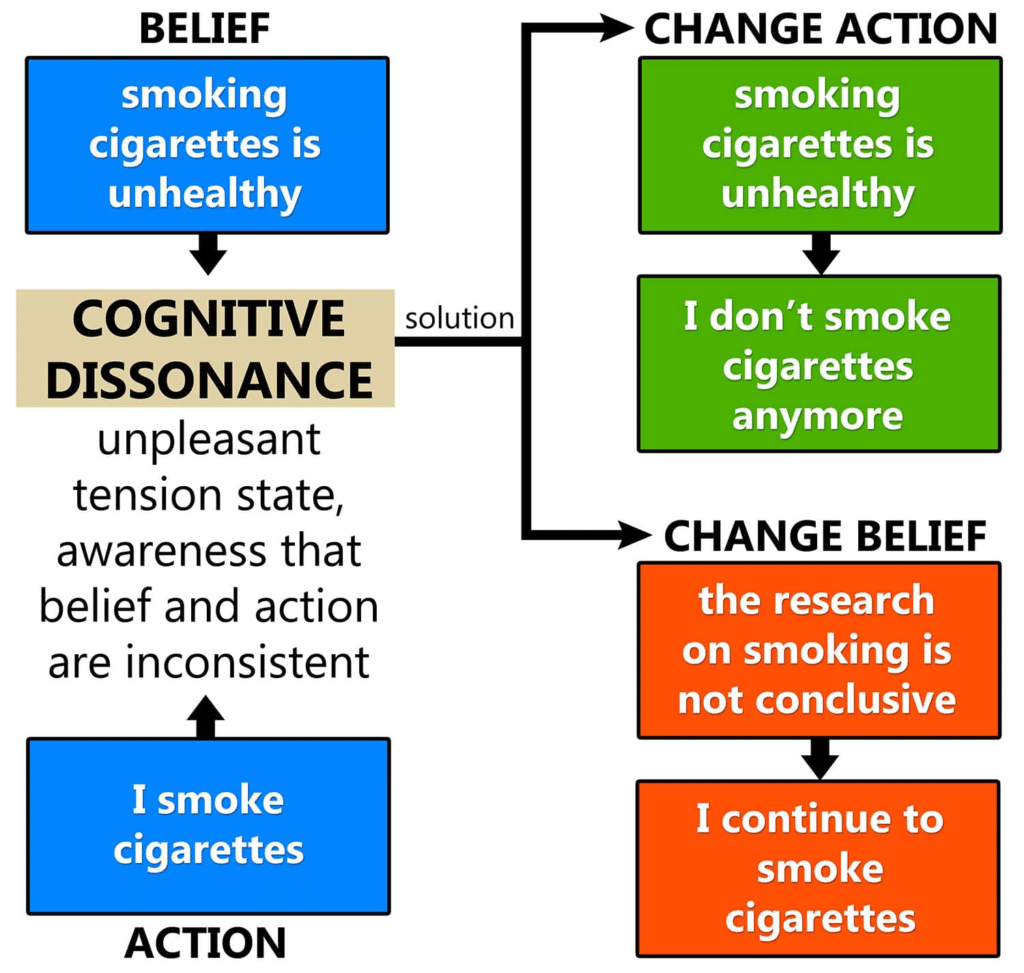- The cognitive dissonance theory was one of the most influential theories in social psychology first proposed by Leon Festinger in his book A Theory of Cognitive Dissonance in 1957.
- According to this theory, cognitive dissonance describes the discomfort experienced when two cognitions are incompatible with each other.
- A cognition is a piece of knowledge, such as a:
- thought
- attitude
- personal value
- behavior
- Cognitive dissonance theory explains how individuals or groups rationalise their support and belief toward different religions, cults or political parties, partially blinding themselves to reduce the contradictions between their thoughts and behaviour.
- Theory proposes that inconsistency between one’s thoughts and behaviours would lead to an uncomfortable psychological or emotional tension (Cognitive Dissonance).
Example:
- You know that smoking (or drinking too much) is harmful to your health, but you do it anyway. You rationalize this action by pointing to your high stress levels.
- An IPS officer believes in non-violence but takes the decision to opt for Lathi Charge to disperse the crowd mostly faces Cognitive dissonance.
Signs of cognitive dissonance
- Some signs you may be experiencing cognitive dissonance may include:
- discomfort before making a decision
- feelings of guilt over past decisions
- shame or embarrassment regarding a decision and hiding said decisions from others as a result
- justification or rationalization of behavior
- doing something out of social pressure, not true interest.
Causes of cognitive dissonance
- Many situations can trigger cognitive dissonance. These can include:
- receiving new information
- experiencing social pressure
- needing to make a choice
Effects of cognitive dissonance
- Some effects of cognitive dissonance can include:
- anxiety
- regret
- low self-worth
- shame
- stress
- reduced self-esteem
- anger
Resolving dissonance:
- Festinger explained that there were different ways in which individuals or groups resolved cognitive dissonance to best suit their situations.
- Either by changing one’s thoughts, changing one’s behaviour to match one’s thoughts, adding a thought to justify the behaviour or trivialise the inconsistency between thoughts and behaviour.
- In most cases, people tend to justify their behaviour by either adding consonant elements or negating contradictory or inconsistent thoughts. This is because it is easier to change one’s thoughts than to introspect and question one’s belief system.

